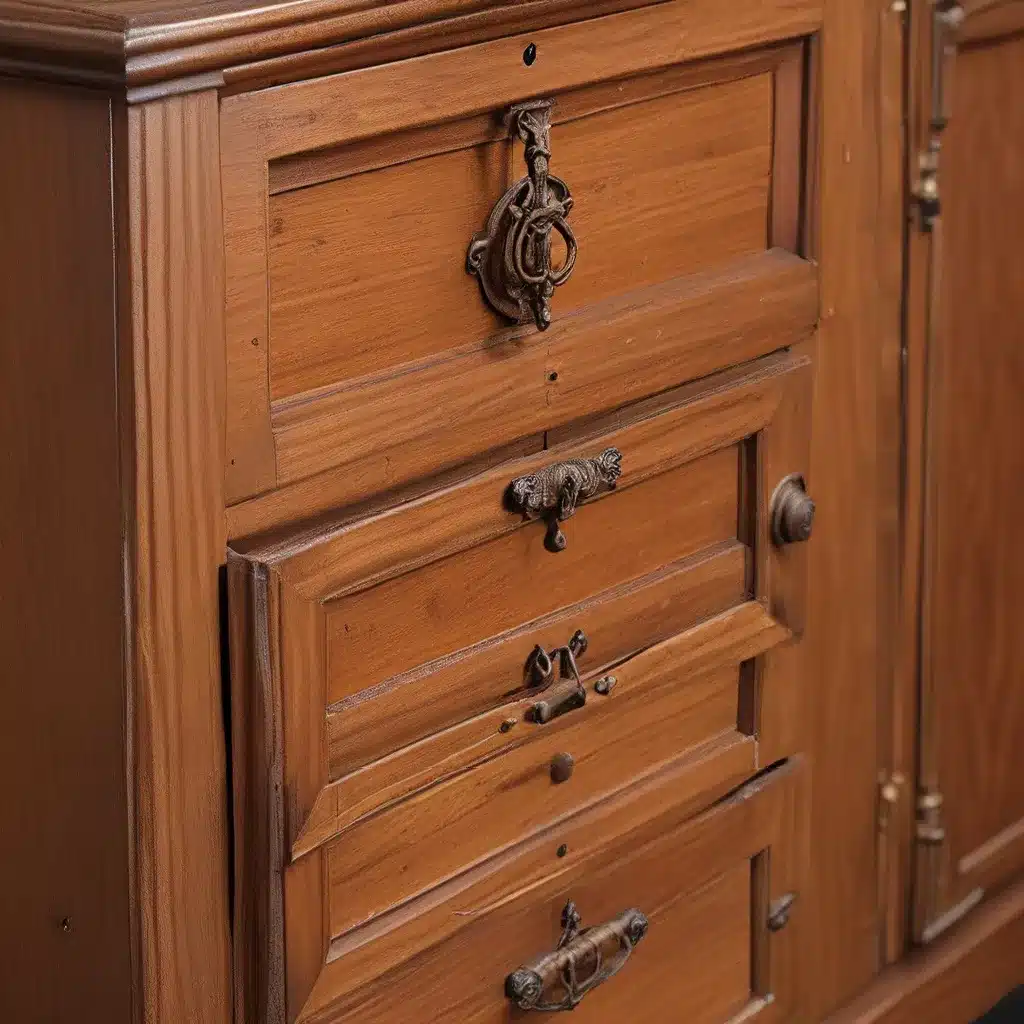
Uncovering the Mysteries of 18th-Century Furniture Finishes
Ah, the allure of 18th-century furniture – the rich, glowing surfaces, the intricate marquetry, the sheer elegance that seems to emanate from every curve and contour. As a furniture enthusiast, I’ve long been fascinated by the techniques and craftsmanship of this bygone era. And recently, I’ve found myself drawn into a captivating rabbit hole – the world of 18th-century furniture finishes.
It all started when I stumbled upon the work of Yannick Chastang, a French furniture historian and restorer who has been delving deep into the archives, unearthing the lost secrets of 18th-century cabinetmakers. Chastang’s research, combined with my own experiments, has led me on a journey of rediscovery, uncovering techniques that I never knew existed.
As Chastang explains, our understanding of historical finishes has long been shrouded in myths and misunderstandings. The passage of time, repeated restorations, and the loss of original samples have all contributed to this obscurity. But with a careful examination of primary sources and a bit of hands-on experimentation, we can start to unravel the mysteries of how our furniture-making forebears achieved those breathtaking results.
Debunking the Myths of 18th-Century Finishes
One of the key myths that Chastang tackles is the notion that 18th-century furniture was primarily finished with a hard, resin-based “French polish.” Sure, this glossy, mirror-like finish was certainly available at the time, but it was actually a 19th-century innovation, not the go-to technique of the 1700s.
In fact, as Chastang’s research reveals, wax finishes were far more prevalent during the 18th century. The master cabinetmaker André-Jacob Roubo, whose encyclopedic treatise on woodworking has become a touchstone for modern furniture makers, clearly describes the use of wax as a primary finishing method.
But here’s where it gets really interesting: Roubo didn’t just recommend slapping on a coat of beeswax and calling it a day. No, he advocated for a specific tool – the polissoir – which was used to both apply and burnish the wax finish to a high gloss.
As Roubo described it, the polissoir was a bundle of common rushes that had been soaked in a mixture of wax and other ingredients. The user would then rub this wax-impregnated bundle over the surface of the wood, generating enough heat to melt and work the wax into the grain. The result? A durable, lustrous finish that could rival the shine of any French polish.
Putting the Polissoir to the Test
Intrigued by Roubo’s description, I decided to try my hand at making and using a polissoir of my own. Tracking down the right type of rushes proved to be a bit of a challenge – Roubo was very specific about the importance of using the correct material. After some research, I learned that the “common rushes” he referred to were a particular species found in wetland areas, with a soft, foam-like interior and a thin exterior wall.
Armed with the right rushes, I set about making my polissoir. The process was straightforward – I simply bundled the dried rushes together and soaked them in a melted wax mixture of my own creation, a blend of beeswax and shellac. Once the wax had hardened, I trimmed the end to create a flat, polishing surface.
And then came the moment of truth. I grabbed a piece of freshly planed mahogany and started to work the polissoir over the surface, applying firm, even pressure. To my amazement, the wax seemed to melt into the grain, filling it and leaving behind a lustrous, mirror-like finish. I couldn’t believe my eyes – the technique was so simple, yet the results were nothing short of spectacular.
Rediscovering the Glory of 18th-Century Finishes
As I continued my experiments with the polissoir, I began to understand why this technique fell out of favor over time. It’s physically demanding work, requiring significant elbow grease to generate the necessary heat and friction. And compared to the relative ease of modern finishing methods, it can seem like a lot of effort.
But the payoff is undeniable. The depth of color, the clarity of the grain, and the overall sense of depth and warmth that the polissoir-applied wax finish achieves – it’s a far cry from the often lifeless, uniform appearance of contemporary lacquers and polyurethanes.
And the more I delve into the history, the more I’m convinced that this wax-based approach was the predominant finishing method of the 18th century, not the thick, glossy French polish that we’ve come to associate with the era. As Chastang’s research has revealed, the shellac-based French polish as we know it today was actually a 19th-century innovation, not the go-to finish of our 18th-century forebears.
Reviving the Lost Art of 18th-Century Cabinetmaking
So, where does this leave us, the modern furniture makers and enthusiasts? Well, in my opinion, it presents a wonderful opportunity to reconnect with the rich traditions of the past and breathe new life into the lost techniques of 18th-century cabinetmaking.
By rediscovering the polissoir and other wax-based finishing methods, we can not only create furniture that captures the essence of the 1700s, but we can also learn valuable lessons about materiality, craftsmanship, and the importance of understanding our historical roots.
At Unfinished Furniture, we’re passionate about preserving and celebrating these traditional techniques. Whether you’re a seasoned woodworker or a furniture enthusiast, I encourage you to explore the world of 18th-century cabinetmaking and discover the magic of the polissoir for yourself. Who knows – you might just uncover a new appreciation for the timeless beauty of furniture from a bygone era.
So, what are you waiting for? Grab your rushes, melt some wax, and get to polishing! The secrets of the 18th century await.








